It’s been a dry year for the Southwest so far, though things are looking up with a fairly active monsoon season underway. I’ve been helping my garden adjust to the heat, use water more sustainably, and provide better habitat for local wildlife. I’ve lost some plants, but plenty have still thrived. Here’s a look at what I’ve been doing in my Sonoran Desert, zone 9a garden.
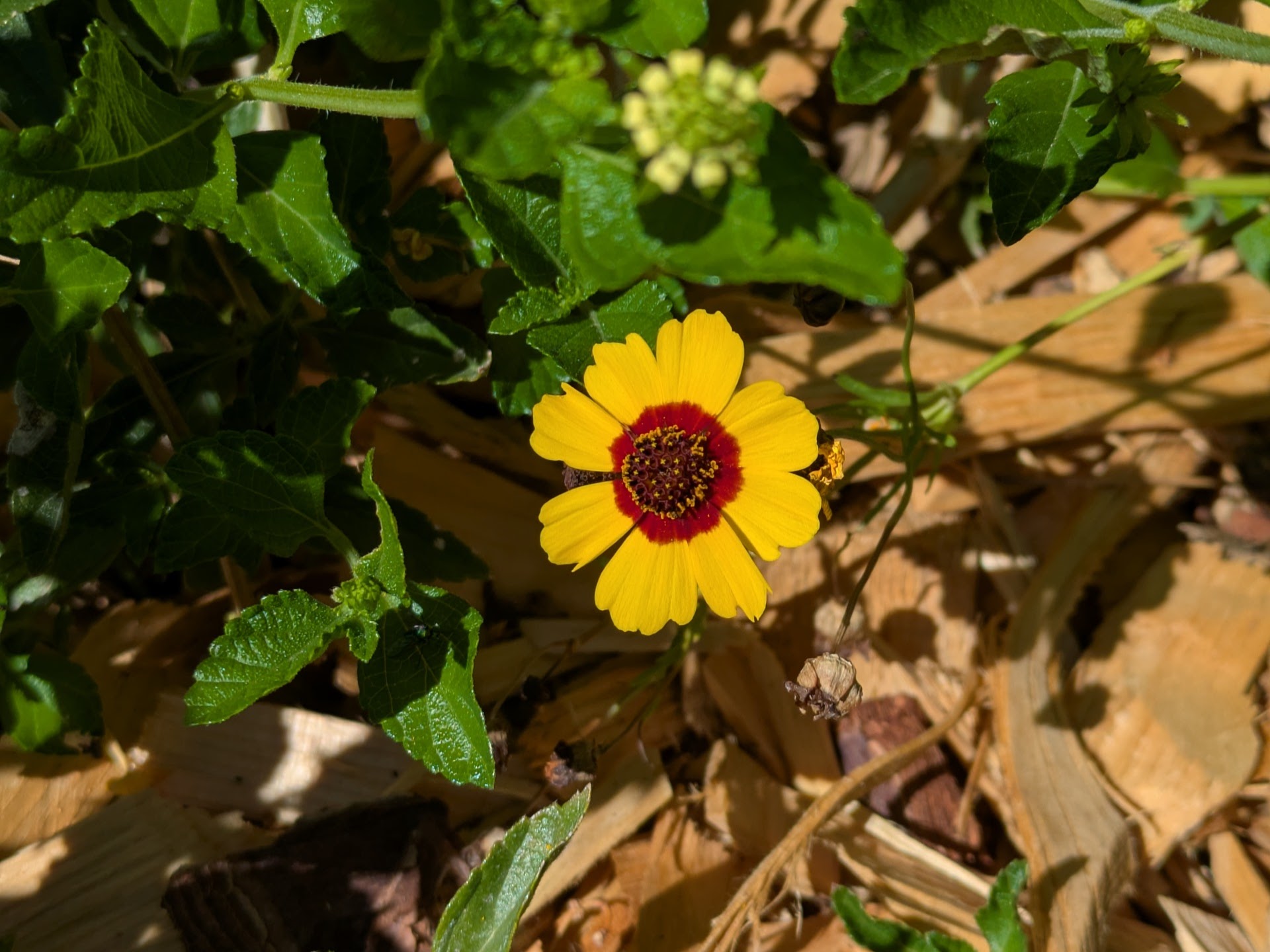
Leaf Litter
Mesquites, Palo Verdes, and Acacias all produce a lot of litter: leaves, seed pods, bark shavings, and more. It’s a lot to clean up. This year, I’ve started raking it around the trees instead, and I’ve seen a few benefits.
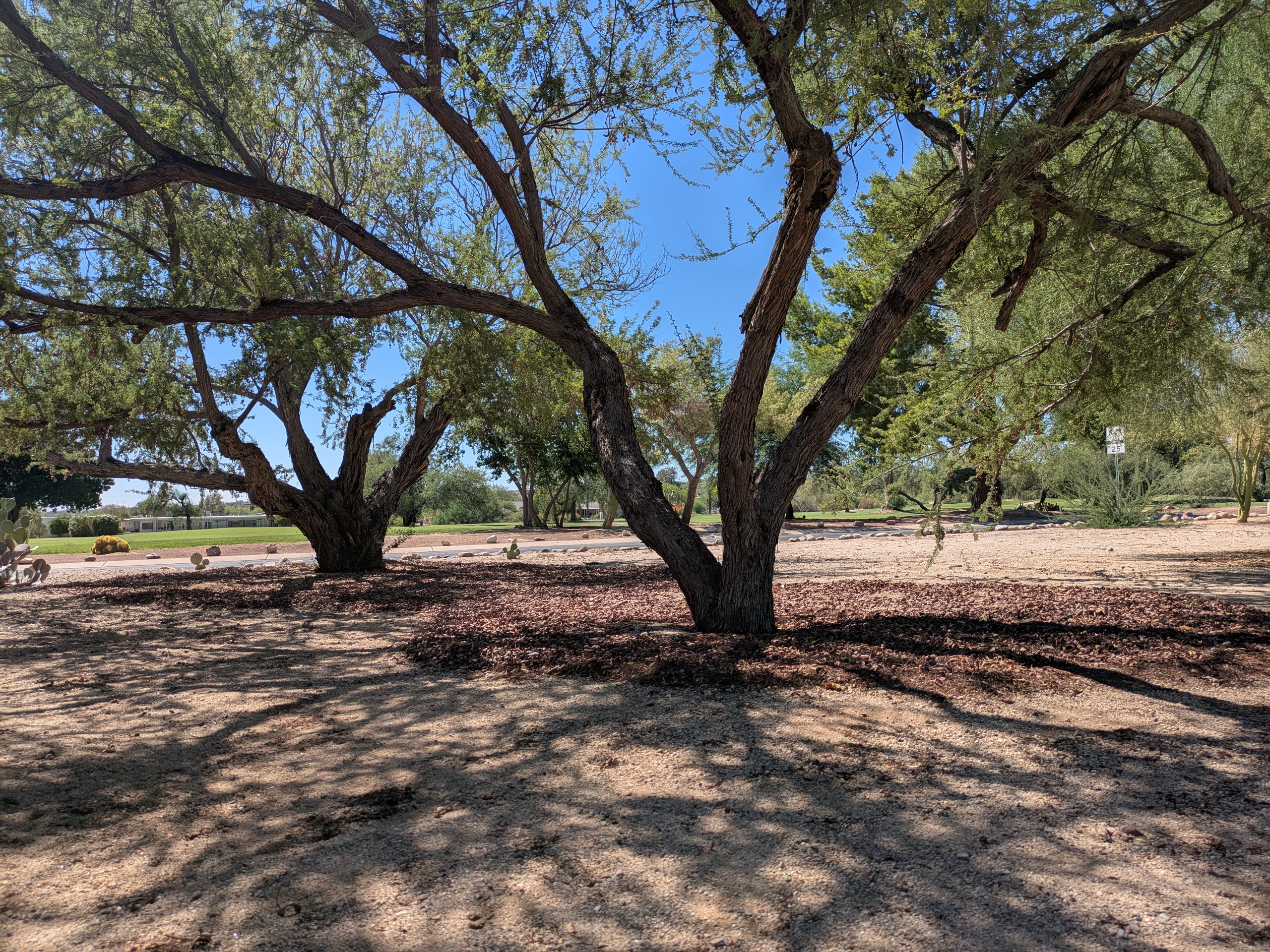
First, I’ve noticed less wilt on the younger trees, which are more susceptible to sun scald. They’re looking healthier and have a greener canopy.
Second, the ground is cooler beneath the litter layer by around 5 degrees Fahrenheit, which helps to alleviate heat stress.
Third, and most importantly to me, is the increase in wildlife I’ve seen. By my best estimates, there are twice as many lizards in the garden this year now that there are more places to hide during the day. This is excellent as they help to keep down small garden bugs and spiders. Lizards are also fun to watch; they scamper across the dirt incredibly quickly, and do ‘push-ups’ to mark their territory. I’ve also seen a lot more moths this year, and a couple more butterflies.
Flowers
Because Tucson has mild winters, many annuals can be grown as perennials. I took advantage of some heavily discounted vinca last August, and while they struggled through the end of last year’s summer, they have done exceptionally well this year.
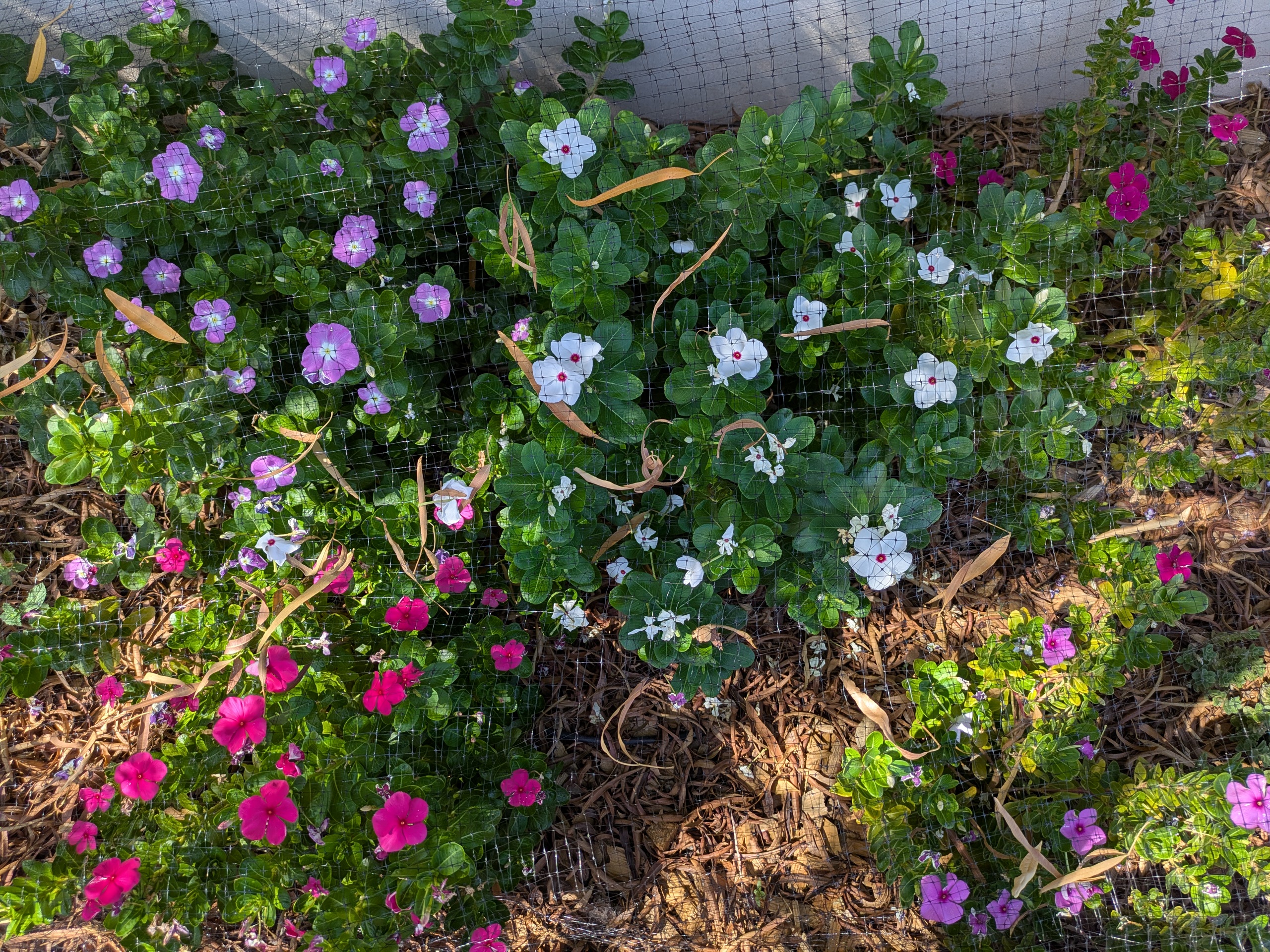
I’ve also introduced some more native flowers: salvia, beebalm, coreopsis, and goldenrod. They also struggled a bit this year, but with some supplemental watering and some shade screens, they’ve settled in and should grow much better next year.
Another nice success has been with a wisteria plant. It’s grown around 2ft this year so far, and I’m hoping I’ll see some blooms before the year is through. It’s being grown to eventually wind around a pergola area to provide natural shade, though that’s a few years away.
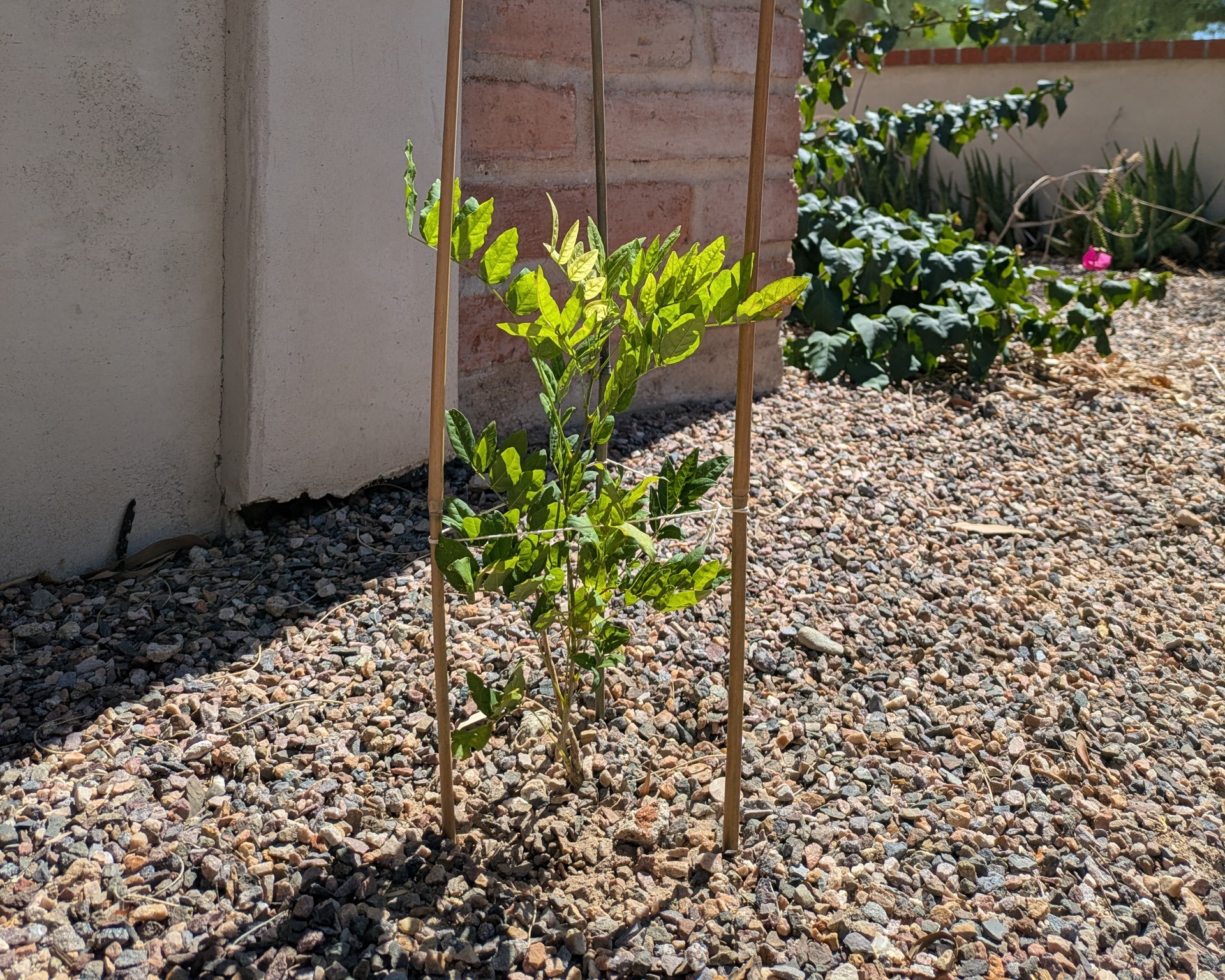
Veg
I knew I’d be travelling a lot this year, so I kept it simple. I had great success with tomatoes this year, which grew wonderfully fast because of the warm spring weather. Jalapenos were another hit success, though sadly, it was simply too hot for the bell peppers, which regularly wilted, despite continued efforts to save them.
Cactus
Take a cutting from a cactus, dry it out for a couple of days, and stick it in the ground, and it’ll grow! I did just that this year, with a success rate of around 75%. I’m very happy with that. I’ve also transplanted a couple of dozen agave pups, which almost all survived. The dry winter and spring were not very helpful, so many of the cacti wilted back.
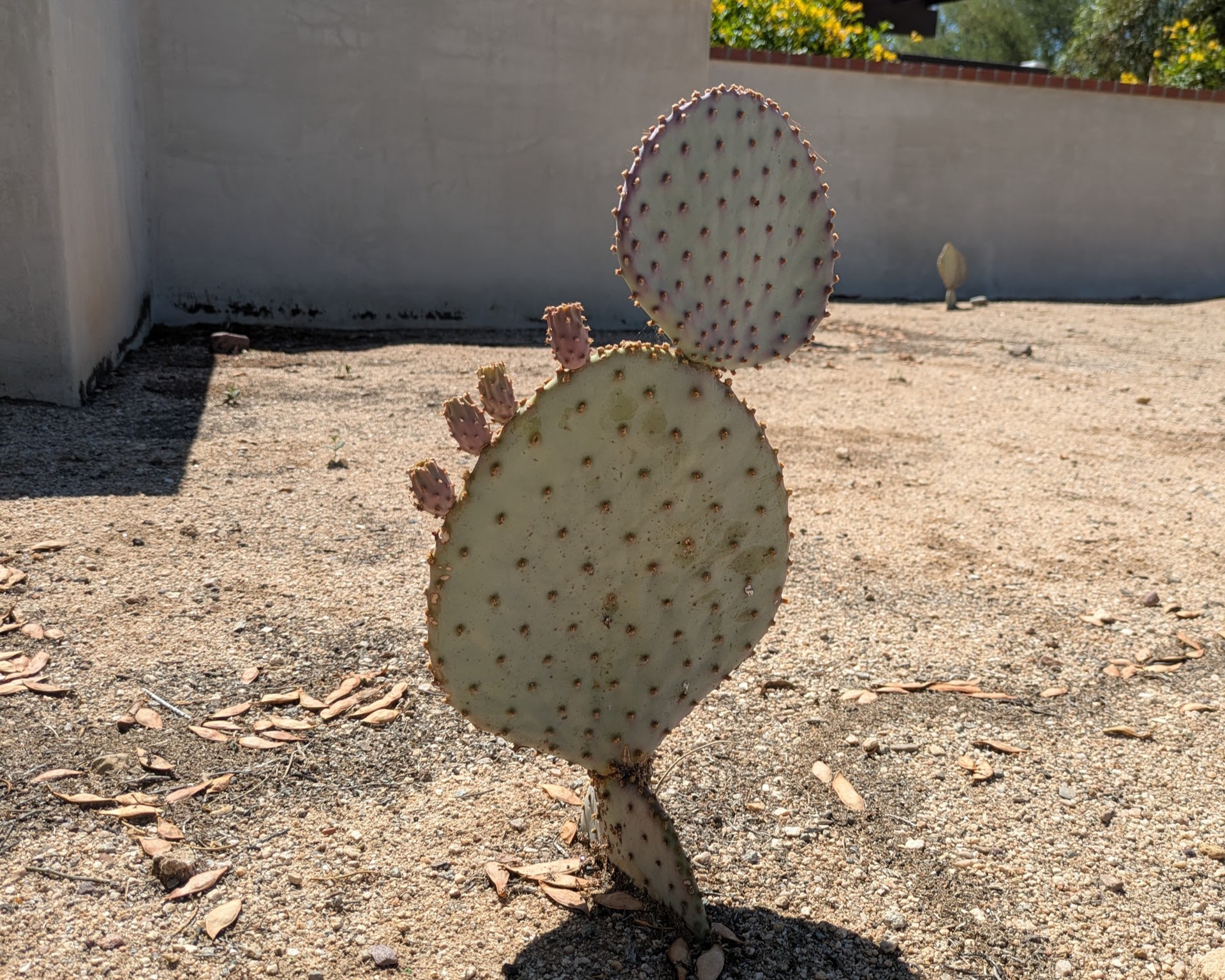
Seedlings
This year, I also attempted to grow Loofah. I started with 16 seeds, which I grew in two stages. The first 8 I planted directly outside in my newly dug and amended sunken garden bed in mid-spring. These were all devoured by the cardinals.
I started the next batch inside to great success using the damp paper towel method. Once they were in pots and had grown to around an inch tall, I began hardening them off so I could keep them in pots outside, as the weather was quickly becoming blisteringly hot.
All but one were snaffled while I was at work. The remaining one now lives inside and is doing very well.
I also tried to grow amaranth, and they all suffered the same fate as the loofah.
I’m also growing some native grasses and some Jewels of Opar from seed, both of which are very healthy and will be planted outside next year, or mid-Fall if they are ready.
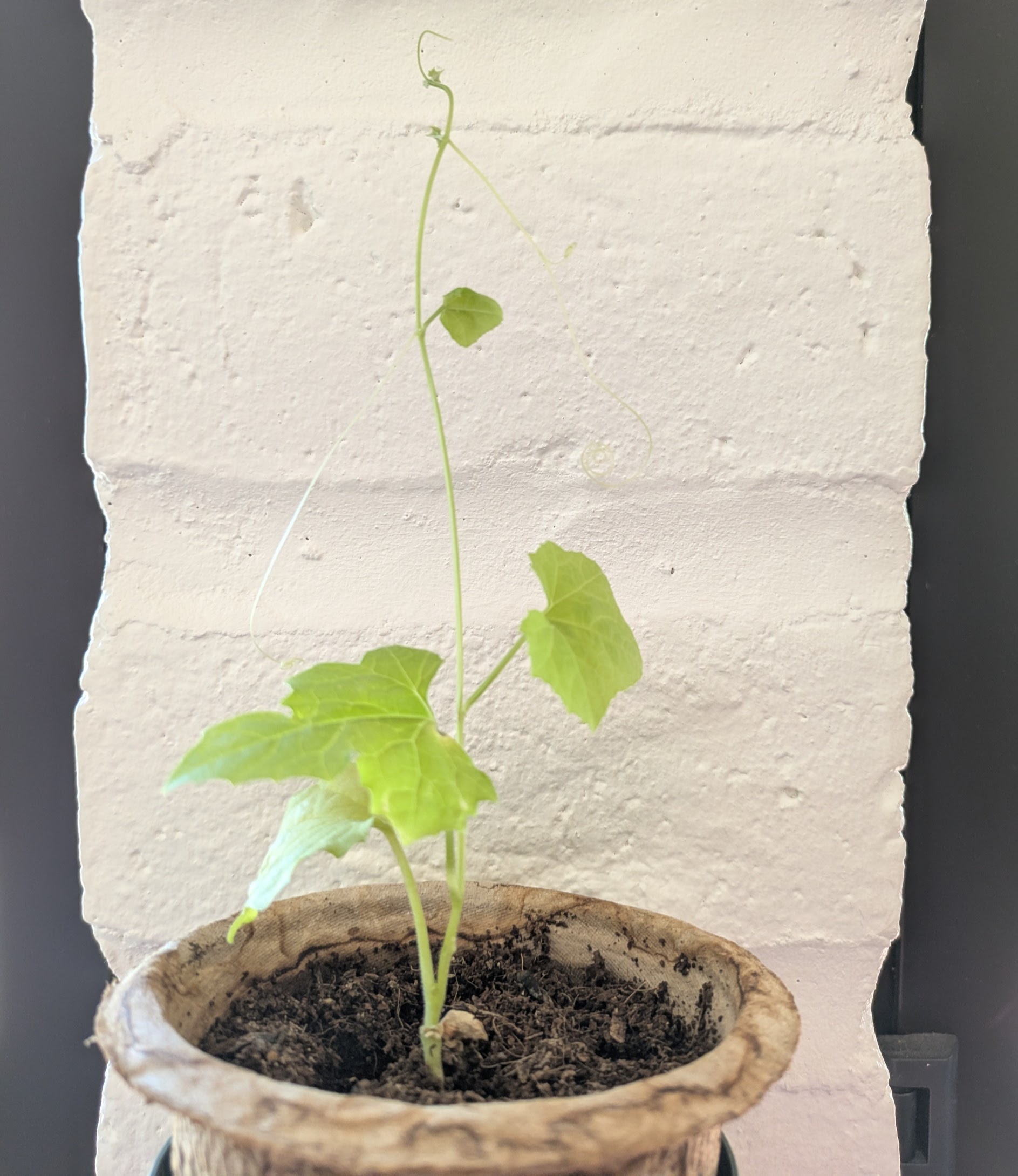
Wrapping Up
It’s been a fun yet challenging growing year so far. With summer halfway through, I’m starting to think about my September plantings that’ll grow in time before the light frosts of December. Not all of my plants made it, but the wildlife has had a field day, and that’s good enough for me.
